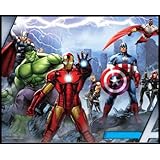Volume 4: "Other Avenues of Amusement"
Intersecting Humor Street at Comedy Corner, we find Other Avenues of Amusement: Cartoons, Improv, Screenwriting, Sketch Comedy, Sitcoms, and Written Comedy. Also includes a tip or two for writing Ads, Animated TV Shows & Movies, Comics, Greeting Cards, Merchandising, and Plays. With insights about “Monster Laughs” and “How to Write All Kinds of Comedy Jokes”.
These topics interweave in wondrous ways, so even if you’re only interested in one or two of these, such as Screenwriting and Sitcoms, read the rest anyway. Several suggestions for Written Comedy also apply to Screenwriting and Sitcoms. And vice versa. Instead of repeating myself too much, I spread the same information over these various topics.
Table of Contents
Cartoons
Improv
Screenwriting
Sitcoms
Sketch Comedy
Written Comedy
This Volume Also Includes a Tip Or Two for Writing:
Ads
Animated TV Shows
Animated Movies
Comics
Greeting Cards
Merchandising
Plays
A Glimpse at the Topics Covered by Volumes 1 - 3
Disclaimers
Book Explanation & Source Citation
Source Citation Key & Criticism/Commentary
Thank You!
Promos for Some of My Other Books
Special Bonus Features:
My Analysis of Mel Brooks’ Comedy Techniques
as Exhibited in “Young Frankenstein”
-------
Tips on How to Write Funny Flash Fiction
Like Woody Allen
-------
Writing Advice (From My Humor Blog)
Please Note: Volume 4 is being released before Volume 2.
Not Just Educational,
But Entertaining Too!
Excerpts from
How to Write
All Kinds of Comedy Jokes
Volume 4:
Other Avenues of Amusement
So write a book. Almost any kind of book can use some humor. Even the Egyptian Book of the Dead could use a few limericks and a Tom Swiftie or two. If only Adolph had put some comedy into his Mein Kampf, maybe the Third Reich wouldn’t have gone so awry. Maybe malaprops, zeugmas, and zingers could’ve prevented both world wars. Excuse me, world conflicts.
-------
Have fun with the thoughts of characters. Make them think anything! Keep track of your own wild imaginings and apply those to your characters. Spoof as needed.
Have fun with Similes when you describe people, objects, events, etc. Narration and exposition never need to be boring, not when you can express the same information via comedy jokes.
From “Monster Laughs”: Trying not to panic, I fled, screaming, “Bloody murder!”
-------From My Analysis of
Mel Brooks’ Comedy Techniques
as Exhibited in “Young Frankenstein”:
There’s no funeral. Just a constable and two gravediggers burying the body. Nor do we see inside the coffin where the corpse appears to spit out dirt.
Added: Although Freddy stands taller than Igor, he tells Igor: “Get down, you fool!”
Altered: The gag about “Could be worse.”/“How?”/“Could be raining.” is in the script, but the rain starts right away in the movie, instead of a moment later in the script. Again, a comedic director taking something funny from the script and making it funnier.
In the script: They dig up the body, wheel it down the street, and return to the castle without incident.
Added: The hilarious encounter with the constable where Freddy acts as if the corpse’s extended arm is his own.
Another fine and funny example of how adding difficulties can add humor. Also, the risk of getting caught adds suspense, which enhances the humor.
Removed: The difficulty Freddy and Igor had getting the body out of the coffin and onto the operating table.
Lesson Learned: Sometimes, instead of adding difficulty, it’s better to replace difficulties, picking the one that’s funniest.
-------From Tips on How to Write
Funny Flash Fiction
Like Woody Allen:
Open with an Intriguing Line
Which Is Soon Followed by a Funny Line
Woody [Allen] opens “Pinchuck’s Law” with: “Twenty years in the homicide division of the N.Y.P.D. and, brother, you’ve seen everything. Like when some Wall Street broker juliennes his little petit four over who gets to work the channel changer, or this lovesick rabbi decides to end it all by salting his beard with anthrax and inhaling.”
“Thus Ate Zarathustra” [by Woody Allen] opens with: “There’s nothing like the discovery of an unknown work by a great thinker to set the intellectual community atwitter and cause academics to dart about like those things one sees when looking at a drop of water under a microscope. On a recent trip to Heidelberg to procure some rare nineteenth-century duelling scars, I happened upon just such a treasure. Who would have thought that ‘Friedrich Nietzsche’s Diet Book’ existed?”

























